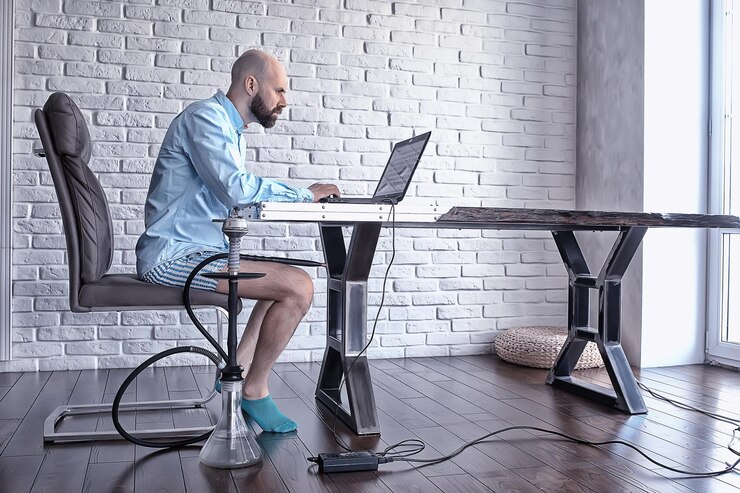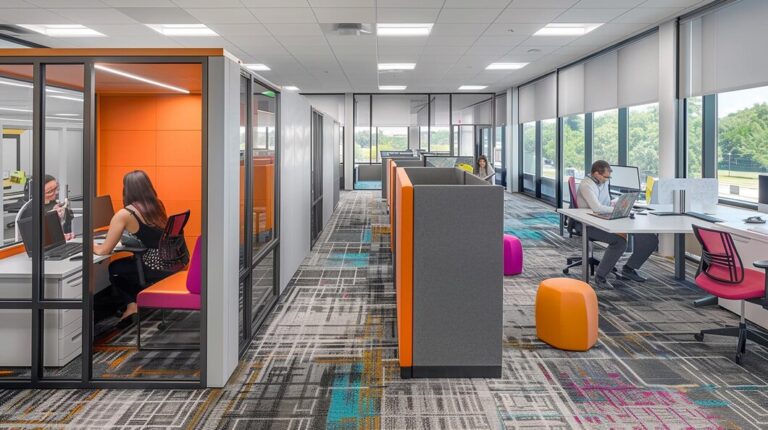Ergonomics in the Workplace: How to Select Office Furniture that Supports Health
In today’s workplace, where long hours at a desk are common, Ergonomics in the Workplace has become a critical consideration for maintaining health and productivity. Ergonomic office furniture is designed to minimize discomfort and prevent injuries, promoting a healthier work environment. This article provides a comprehensive guide to selecting office furniture that supports your well-being and enhances your work performance.
1. Understanding Ergonomics: The Basics
Ergonomics is the science of designing work environments that fit the user’s needs. Proper ergonomics aim to reduce strain and stress on the body, which can prevent injuries and improve overall comfort. In the context of office furniture, this means selecting items that support your body’s natural alignment and movements.
2. Choosing the Right Ergonomic Chair
An ergonomic chair is central to a healthy workspace. Key features to look for include:
- Adjustable Seat Height: Your feet should rest flat on the floor, with your knees at a 90-degree angle.
- Lumbar Support: The chair should provide support for your lower back, following the natural curve of your spine.
- Adjustable Armrests: Armrests should be adjustable so that your arms are relaxed and elbows are at a 90-degree angle.
- Seat Depth and Width: Ensure the seat depth allows you to sit with your back against the chair while leaving about 2-4 inches between the back of your knees and the seat edge.
- Backrest Tilt: The backrest should recline and lock into various positions to accommodate different sitting postures.
3. Selecting an Ergonomic Desk
An ergonomic desk should complement your chair and allow you to work comfortably. Consider these aspects:
- Height Adjustability: Look for desks that can be adjusted to accommodate both sitting and standing positions. Standing desks or sit-stand converters can help reduce the risks associated with prolonged sitting.
- Desk Surface Area: Ensure the desk is large enough to accommodate your computer, paperwork, and other essentials without crowding.
- Keyboard and Mouse Placement: Your keyboard and mouse should be positioned so your forearms are parallel to the floor or slightly declined, with your elbows close to your body.
4. Importance of Proper Monitor Placement
Monitor placement is crucial for reducing eye strain and neck pain:
- Screen Height: The top of your monitor screen should be at or just below eye level. This allows you to view the screen without tilting your head.
- Screen Distance: Position the monitor about an arm’s length away from your eyes. Adjust the distance so you can read the screen without leaning forward.
- Screen Angle: Tilt the monitor slightly upward to reduce glare and reflections.
5. Supporting Accessories: Enhancing Ergonomics
Additional ergonomic accessories can further improve comfort and health:
- Keyboard Tray: A keyboard tray allows for better positioning of your keyboard and mouse, reducing strain on your wrists and shoulders.
- Footrest: A footrest helps maintain proper posture and supports your feet if your chair is too high.
- Document Holder: Positioning documents at eye level can reduce neck strain and improve posture.
6. Incorporating Movement and Breaks
Even with the best ergonomic furniture, sitting for extended periods can lead to health issues. Incorporate the following practices:
- Regular Breaks: Take short breaks every 30-60 minutes to stand up, stretch, and move around.
- Stretching Exercises: Incorporate stretches and exercises into your routine to relieve muscle tension and improve circulation.
7. Customizing Your Workspace
Everyone’s ergonomic needs are different, so personalizing your workspace is essential:
- Adjustable Features: Opt for furniture with adjustable features that can be tailored to your specific body dimensions and working style.
- Personal Comfort: Consider personal preferences, such as cushion type, chair material, and desk layout, to enhance comfort and satisfaction.
8. Investing in Quality
Quality ergonomic furniture can be a significant investment but is essential for long-term health and productivity. Look for reputable brands known for their ergonomic designs and durability. Consider warranties and return policies to ensure you’re making a wise investment.
Conclusion
Selecting ergonomic office furniture is crucial for creating a healthy and productive workspace. By focusing on the key elements of ergonomic chair design, desk setup, monitor placement, and supporting accessories, you can reduce discomfort and prevent injuries. Remember that ergonomics is not just about the furniture but also about incorporating good practices and personalizing your workspace to fit your needs. Investing in Ergonomics in the Workplace pays off in improved health, comfort, and productivity, making it a worthwhile consideration for any modern workplace.







